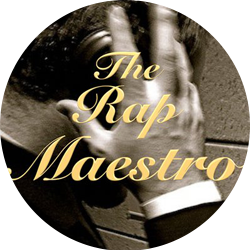In continuing to rectify the inexcusable omission of certain rappers
from my list of the analyzed, let us now move on to someone who’s been
in the game forever, it seems: Busta Rhymes. His verse on the 1992 Tribe
Called Quest cut “Scenario”, critically acclaimed as one of the
greatest rap verses of all time, has gotten love from me before, in the
form of this article, all about what the rap of the future might sound like. But he never got his own article.
Today, that will all change.
For this analysis, we will be taking a look at his Dr. Dre-produced
song “Holla”, from his 2002 album “Genesis”. (If you’re catching on to
any pattern here, it should be that more than half the songs I analyze
are Dr. Dre beats…get it?) You can hear it at on youtube here, and see the Rapgenius page for it here.
We will be examining it with many of the same techniques we did in my MF DOOM analysis,
such as by measuring his rhymes per bar, his sentences per bar, and so
on. And maybe we’ll find out why he is one of the best emcees of all
time.
This time, let’s start with the stats, and then move to the general. This song has:
- 49 bars
- 640 syllables
- 194 rhymed syllables
- 56 sentences
- 456 words
Now, we can come up with certain measurements that will describe a
rapper’s flow – how long the words they use are, how long and how many
sentences they have, and so on. For this, remember that a bar is simply a
musical measure of time, like a minute. It is made up of 4 beats, just
like how 60 seconds make up a minute. A beat is the constant pulse under
all music, that all last the same amount of time. Musicians place their
musical ideas in the music according to these beats and bars — where
they start, where they end, and so on.
So, We can use bars to compare rappers across different songs based
on that common measurement, as we’ll see. Busta’s stats in this song
are:
- 13.1 syllables per bar
- 1.14 sentences per bar
- 1.40 syllables per word
- 11.85 syllables per sentence
- 30 % of syllables are rhymed
Let’s compare them with MF DOOM’s stats from the analysis of a few days ago:

Now, the thing that stands out the most here is the great difference
between the percentage of syllables rhymed in each respective rap. MF
DOOM has almost half of all his syllables rhymed, compared to Busta
Rhymes’ rhyming of about 1 out of every 3 syllables. What is most
surprising to me, however, is that while MF DOOM uses comparatively very
long words – on average, each word of his has a length of 1.75
syllables – Busta remains at 1.40 syllables per word. 1.40 is still
longer than Eminem and Game in 2 of their raps (“Business” and “How We
Do”, respectively), but also shorter than the syllables per word rate of
Nas, as we see in this analysis here. (You can find the analysis of Eminem here, and the analysis of Game here)
However, at the same time, Busta has a little over 2.5 more syllables
per sentence than DOOM, but a lower rate of 1.14 sentences per bar.
From these stats, we know that in this song Busta uses less sentences,
but those sentences on average are longer because he uses more words.
From a quick perusal of the music, we can find cold, hard examples to
back this up:

In the above music, where the vertical slashes such as between “be”
and “all” represent bar lines, and the curved lines under the music such
as the “Cze-“ of “Czechoslovakian” and the “-gas” of “niggas”, we can
tell that there are 6 sentences that cover 6 bars. This is different
from DOOM, where we see 9 sentences covered in 6 bars, such as in the
music below:

However, what stands out most for me about this song is Busta’s
insane rhyming skills, coupled with a crazy vocabulary and complex
rhythms, somewhat similar to DOOM. The fact that he rhymes some of these
words together is amazing. Some of the highlights:
“Newest Zone I’m in / Smithsonian / Napoleon”
“Leviathan / Rhymin’ in / Ireland”
“Hit ya / Get ya / Bomb scripture / Bar Mitzvah” – maybe the best, if it weren’t for:
“Czechoslovakian / Yugoslavian / Bothering” – (I don’t think I could’ve found Yugoslavia on a map when it was a country)
“Moderate / Conglomerate / Honor it / Conquer it”
“Vernacular / Spectacular / whacker / postal office massacre”
And that’s just the first verse!
You get the picture?
Shit, in the second one he mentions “Filippo Brunelleschi”. I’ll just give you the rapgenius explanation for it.
So, we covered crazy vocab and rhymes. Now, how about his rhythms?
As I explained in the second half of my DOOM analysis, all rap music
is organized by beats. Not the backing musical track that producers like
Kanye West make, but the beat as a music theory term. A beat always
lasts the same amount of musical duration – however, it does not last
the same amount of chronological time, measured in seconds. This is so
that songs can be fast or slow, but still playable, because beats are
easier to count. It is simply the rate at which beats come, measured per
minute, that decides whether a song is slow or fast.
One of those beats can also be called a quarter note. Then, to make
smaller rhythms, we split the quarter note in half, making 8th notes,
and 8th notes in half, into 16th notes. The 16th note is the rhythmic
level at which most rap music rests. So, to get there, we divide the
quarter note by 4, because 1 16th note lasts ¼ of a quarter note.
However, that doesn’t mean we can’t divide a beat into other numbers,
like by 5, as Busta does.
Below is a demonstration of the quintuplet (division by 5 of the
beat) rhythm that Busta uses. In it, you’ll hear/see that low bass drum
kick playing the beat that measures out the music evenly. In the music
above it, you’ll hear/see a triangle playing first 2 quarter notes, then
2 eighth notes that are connected above the circular noteheads with 1
line (called a “beam”), and then hear the triangle play 4 16th notes
that are connected over the circular noteheads by 2 beams. Then, the low
drum will play 2 bars of rest, and then you’ll hear a bar of those 16th
notes, which is where most rap music happens. It’s pretty easy to
follow along, because they are slower than quintuplets, which are played
next after 2 more bars of only the bass kick playing. You can hear that
there are 5 notes to a beat, and that they come much more quickly.
Finally, after 2 more bars of the bass kick, you can hear the triangle
switch back between playing 4 16th notes to a beat first, then 5 16th
notes to a beat, then 4 16th notes, then 5 16th notes, and so on, for 2
full measures. It’s easy to tell the 5-16th-notes-per-beat (called
“quintuplets”), because there is a “5” over those beats. See the video here, on youtube.
You can hear the quintuplet rhythms are much quicker and harder to
count and pay attention to. This makes Busta’s rhythms extremely
complex. You can see this basic rhythm of the quintuplet all over this
rap, but it is especially prominent in bars 18-19, as indicated by the
“5” over some of the beats:

They are also there at bars 44-47.

Listen for them when you play the final demonstration video at the end of this article.
Finally, Busta’s rhythms are so complex because he uses something
called “metrical transference.” This means that he moves around a single
musical idea into different places relative to the beat that has been
played by that low bass kick drum.
So, as we know, there are usually 4 16th notes to a beat. That means,
you can take the same musical idea and place it into any of those 4
16th note slots, and hear it still as the same musical idea. We hear it
as the same musical idea because 1.) All of the note durations are the
same, 2.) They are all grouped together as a single phrase/sentence, and
3.) They are all rhymes on the same sound. Busta, in the opening
measures, moves a single musical idea, an 8th note followed by 2 16th
notes, into the 4 different slots. The four groups are “team select”,
“please collect”, “Gs connect”, and then the “these” of “these niggas
direct.“ They are all the same length of time (1 8th note followed by 2
16th notes, as indicated by those beams over the circular noteheads),
they all are the same rhymes in the same order (“team” with “please”
with “Gs, “select” with “collect” and “connect”, and so on), and they
all form their own phrase grouping, because Busta is just listing
things. This is metrical transference, because Busta is transferring the
same musical idea relative to the meter of the music, which is played
by the bass kick in the video below. So when you listen to it, listen to
how those groupings all start and end in different places from each
other, relative to the beat. Then, the rest of the song is played also.

